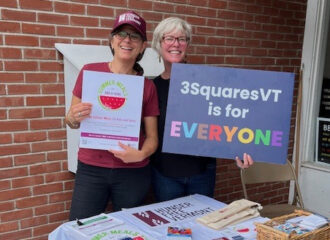
One goal of developing an early childhood system of care in a community is that different services will be integrated and coordinated with one another, creating a more seamless experience of support for families. In the Lamoille Valley, the community has operated on that basis for many years, and it is one of Building Bright Futures principles as well: we see success when we work in a coordinated fashion.
During the last four years in my Regional Coordinator position, I’ve been fortunate to be involved with a workgroup at the national Center for the Study of Social Policy, (CSSP). CSSP is best known by folks in the early childhood community for their Strengthening Families framework, but they also developed the Youth THRIVE framework, the expansion of DULCE, and are heavily engaged in equity work across the country.
My connection has been as a partner in the effort to better understand the outcomes and metrics that reflect effective practices in the systems of early childhood well-being. Recently our team has focused on several tools that aim to measure how a group of individuals or organizations are integrated and coordinated.
So, what would “integrated and coordinated” look like in practice? Over the last couple of years the group identified a set of standards that describe the kind of practice we aspire to. One of those standards that demonstrate efficacy is that we will routinely help families get to the right place where their needs can be met. Another standard is how well a community of practice works together when multiple service providers are involved with the same family.
In the Lamoille Valley, the BBF Council has been able to test a new tool to assess how we are doing on each of those standards – and, more importantly, to identify how we can do better. This Systems Integration Survey is a tool that can be easily modified and shared.
The survey asks one to respond to a set of questions about each of two scenarios. In answering the questions, respondents think about the full range of systems that they interact with in working with young children and their families, including: pediatrics, early care and education, home visiting, early intervention, child welfare, mental health, income support, food and nutrition and family support / parenting education.
This survey rates an individual’s perception of the level of integration so it is subjective, but can be highly revealing when analyzed with respondents.
We have been able to administer our systems integration survey within several communities of practice and then meet and analyze both the results of the survey, but, perhaps equally importantly, the nature of the survey itself.
One of the outcomes of this project is that a community of care that takes the survey and then discusses it is reminded of the importance of coordination and integration – and often a group will work to improve their practices after the exercise. Another benefit is that administrators can use the survey to help increase the efficacy of their agency by focusing attention on areas in which a community of practice believes the levels of integration and coordination to be low.
The early childhood field is complex, with many players – but without exception, those involved want the best for children and families. It is this common value that motivates us to seek ways to measure how well we’re doing. I’m excited to have been able to do this work, and look forward to sharing it more broadly in the near future. If reading this has inspired you to learn more about these tools to measure how well a system, or a community of practice feels they are integrated and coordinated, you can contact me directly.
Building Bright Futures’ mission to advise the administration and legislature about the well-being of children across the state is well served by tools to measure if and how systems of care are working. It is in that spirit that we continue this rewarding work in the Lamoille Valley.


